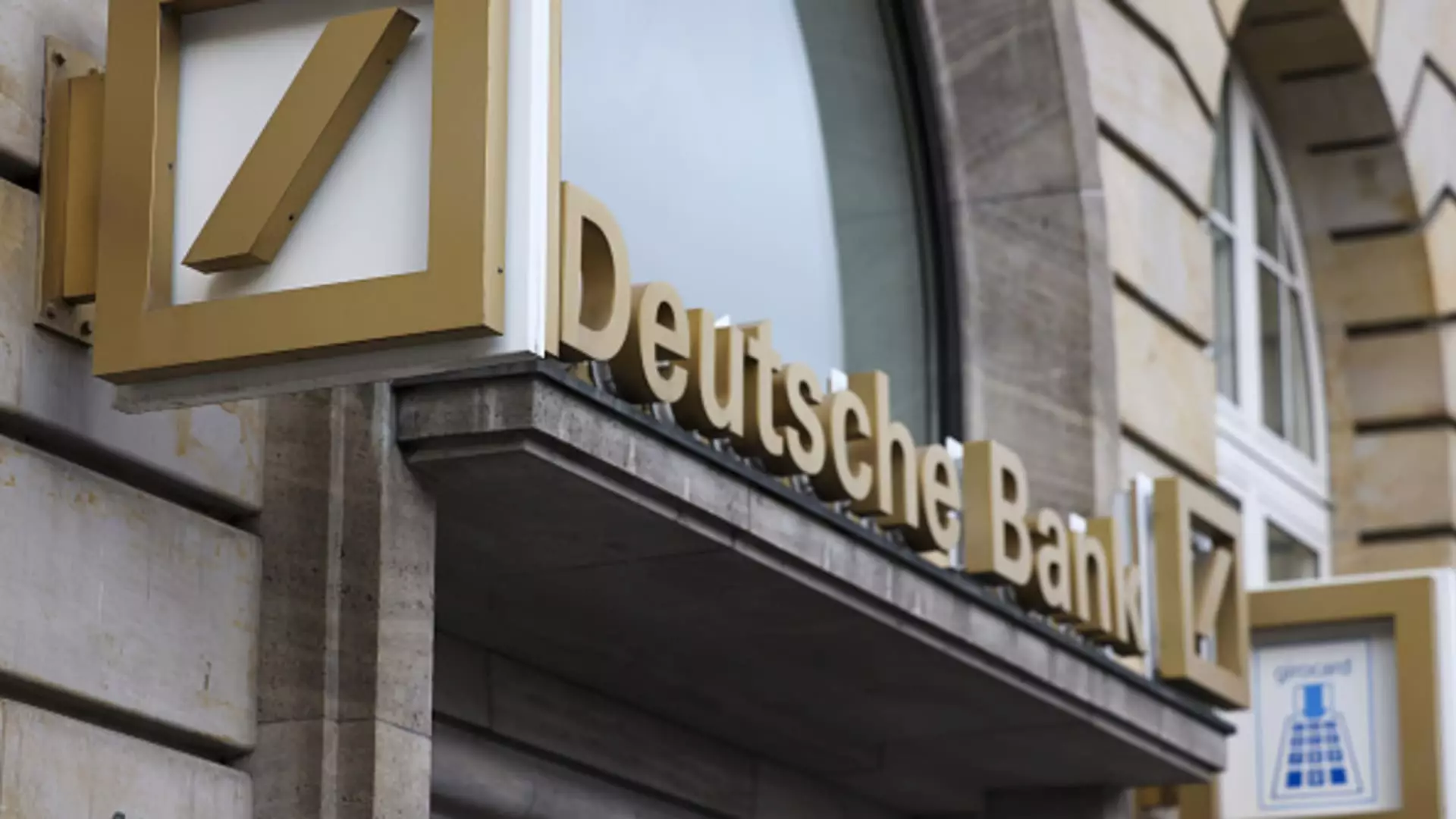Deutsche Bank has marked a significant turnaround in its financial performance by returning to profitability in the third quarter of 2023. After a disheartening second quarter, which saw a loss of €143 million, the bank announced a net profit of €1.461 billion ($1.58 billion) attributable to shareholders—a figure that far exceeded analysts’ expectations, which had estimated profits at €1.047 billion. This impressive recovery is not only a testament to the bank’s resilience but also reflects strategic adjustments made in response to a fluctuating financial environment.
Revenue for the quarter rose to €7.5 billion, also surpassing analysts’ forecasts of €7.338 billion. Such results underscore the bank’s ability to effectively generate income amid external economic pressures. This turnaround also highlighted substantial growth in areas like its investment banking division, which reported revenues of €2.5 billion, an 11% increase year-on-year, indicating a robust demand for financial services.
One of the pivotal factors contributing to the bank’s resurgence was the resolution of legal challenges it faced, particularly concerning its acquisition of Postbank. In August, around 60% of plaintiffs in this ongoing litigation settled their claims, allowing the bank to release €440 million from its litigation provisions. This partial release significantly bolstered the bank’s reported profit, showcasing how legal entanglements can dramatically affect financial outcomes.
Moreover, Deutsche Bank’s proactive measures towards cost management have positioned it favorably in a competitive landscape. The bank is currently undertaking a cost-saving initiative, aiming to reduce its workforce by 3,500 positions by 2025. In the face of these cuts, the bank still managed to increase its workforce by 766 employees during the third quarter, suggesting a strategic approach to balance operational efficiency with growth objectives. As reiterated by CEO Christian Sewing, the goal is to enhance shareholder value through greater capital distributions, bolstered by careful financial planning and prioritization of key areas within the bank.
The financial performance of Deutsche Bank comes against a backdrop of evolving challenges within the European banking sector, which is grappling with falling interest rates following the European Central Bank’s easing of monetary policy. Analysts have raised concerns regarding the sustainability of profit margins, as the rising interest rates that had previously buoyed bank revenues begin to diminish. McKinsey’s latest Global Banking Annual Review points out that, to maintain current return on tangible equity (ROTE) margins, banks will need to implement cost cuts at a rate disproportionately greater than any revenue decline, citing a ratio of approximately 2.5 to 1.
In light of these dynamics, the German banking giant faces intense pressure not only to sustain its recent profitability but also to strategically position itself in relation to its U.S. counterparts. A comparative analysis highlights that many European banks have recently engaged in stock buybacks and increased dividends, reflecting a robust but cautious growth strategy.
With its recent performance, Deutsche Bank is laying the groundwork for future stability and growth. The bank’s CET1 capital ratio, a critical measure of solvency, improved to 13.8%, up from 13.5% in the previous quarter. Such figures indicate a solid foundation upon which the bank can continue to build. As Deutsche Bank cautiously re-enters the prospect of share buybacks—previously stifled by litigation claims—the market will be watching closely.
The current landscape also presents challenges, especially as the bank has distanced itself from a potential merger with domestic rival Commerzbank. With baffling mergers on the horizon, including Commerzbank’s potential acquisition by Italy’s Unicredit, Deutsche Bank’s independent strategy could serve as an advantage in maintaining market share amid industry consolidation.
While Deutsche Bank’s recent financial results signal a path forward, the bank must navigate a complex environment of regulatory constraints and market expectations, relying on innovation, cost management, and strategic realignment to achieve continued success in the European banking sector.


Leave a Reply